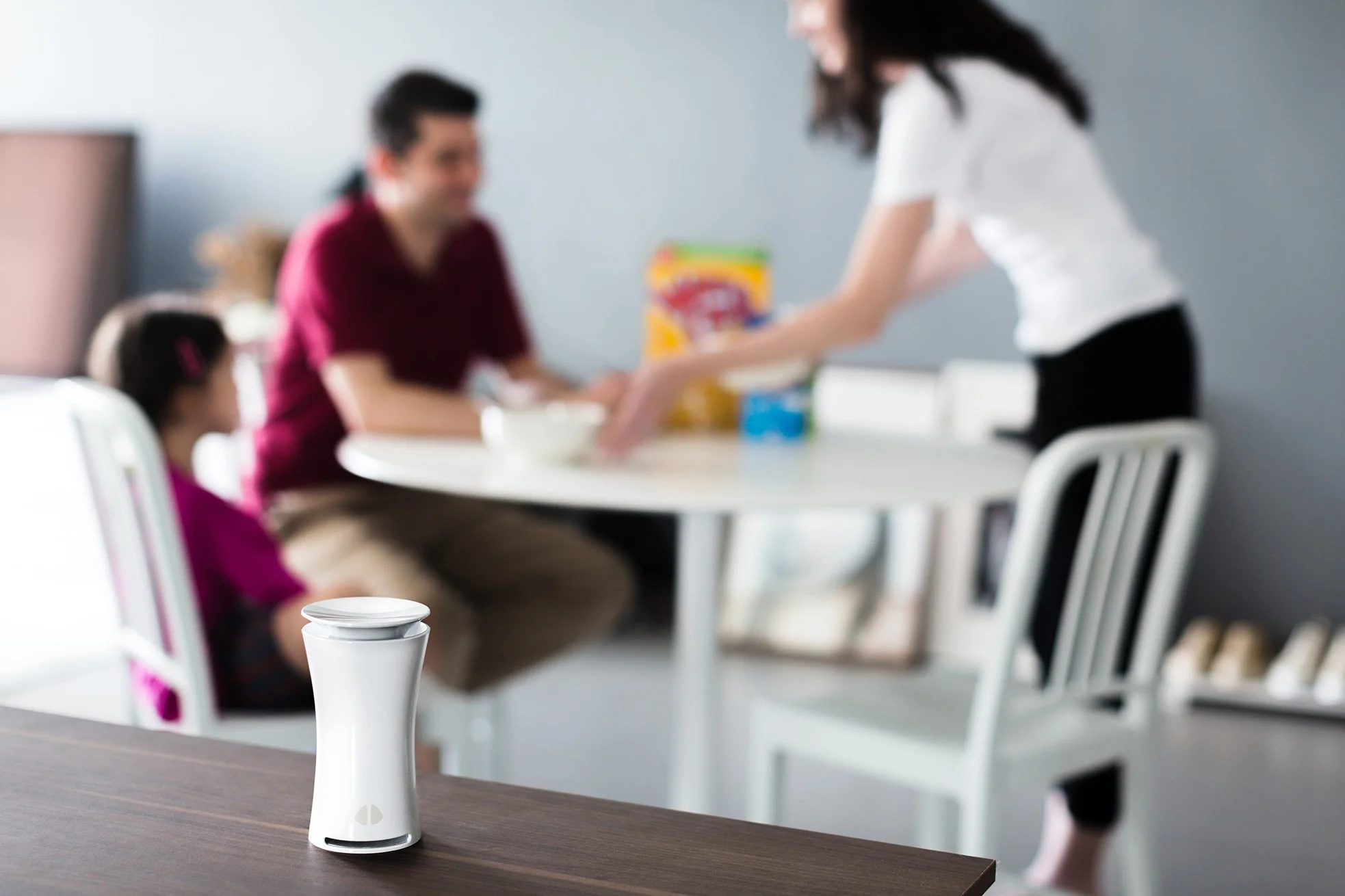How can you instantly make your home environment healthier?
New technology is making it easier than ever to improve the air quality in your house. From reducing allergens to eliminating toxins, find out which new devices are changing the game in our company magazine Compass Quarterly.
Research shows our indoor air is full of harmful chemicals. But new monitoring and purifying technologies are making it easier than ever to breathe—and think, feel, and sleep—easier at home.
In the past few years, we’ve undergone a health awakening that has extended beyond tracking our steps, bedtimes, and sinful bites to each inhale we take under our own roofs. Enter the new uHoo indoor air toxin sensor. The sleek hourglass-shaped gadget, about the size of a soda can, busily monitors an unprecedented number of air contaminants.
“UHoo has eight dedicated sensors — the most on the market,” says Dustin Jefferson Onghanseng, who came up with the idea for the tool with Brian Lin during a 24-hour hackathon. Users can keep tabs on temperature, dust, volatile organic compounds (VOCs), and humidity — plus carbon monoxide, carbon dioxide, ozone, and air pressure to boot.
Why the need for so much information? Well, we spend 90% of our time inside, and that trapped, recirculating air is definitely dicey. In fact, it might even be more polluted than the toxic brew you inhale while walking outside in some of the world’s smoggiest cities. Study after study in recent years has shown that breathing unhealthy air can exacerbate allergies and asthma, cloud concentration, disrupt sleep, and even trigger illness.
And now that we’re enlightened, we want to root out, name, and eradicate all of the invisible contaminants in our homes. So it should be no surprise that people started clamoring for uHoo (a play on the Chinese word yohoo, which means “excellent breathing”) well in advance of its official spring 2017 release. Consumers are racking up pre-orders through uhooair.com, and “we already have a smart city project in Europe and are doing live pilots with property developers in Asia,” Onghanseng says.
The Singapore-based creators, both of whom suffer from chronic respiratory conditions, also designed uHoo with education and data-sharing in mind. Minute-by-minute air quality data is delivered to and stored in your smartphone so you can easily spot trends and send them to your health practitioners. Pretty much the only thing the uHoo can’t do is actually clean your air, but it will alert you to troubling levels of any of eight measurables and give specific advice for suggested remedies (i.e. check for a gas leak, open a window, or rethink your chemical-heavy cleaning products).
Eventually, the uHoo might follow in the footsteps of Awair, an air-quality monitor released in 2015 that, last July, announced an integration with Nest, Amazon Echo, and IFTTT to make it an IoT (“Internet of Things”) product. That means that it can communicate with other devices in your home — like an air purifier or de-humidifier — and automatically activate them based on its readings.
The company behind this device, Bitfinder, is targeting real estate developers and builders, as well as individual consumers. A smart move now that we have building certifications, like Fitwel and the Well Building Standard, that signify the healthfulness of an office, hotel, or apartment building.
Delos, a wellness real estate and technology firm, is behind the Well Building Standard. The company paired with the Mayo Clinic in Rochester, Minnesota, to create a specialized lab devoted to studying how the makeup of the air inside our homes (along with light, sound, and temperature) boosts or busts our mood, health, and productivity. With those findings in mind, Delos also designed health-minded amenity packages in Massachusetts’ new mid-rise Fuse Cambridge apartment building. Among the offerings are primo air purifiers that wipe out everything from pollen to pet dander to neighbors’ cooking aromas.
Those who buy the multi-million dollar condos in Zaha Hadid’s New York City work-in-progress, 520 West 28th Street, will enjoy indoor air that’s been filtered a whopping four times. And luxury developers known for adding a LEED-certified sheen to old homes, like Troon Pacific Custom Residences in San Francisco, are considering their potential buyers’ health as well as the carbon footprint by installing state-of-the-art ventilation systems and formaldehyde-free cabinetry. Starting this year, builders can even find drywall that absorbs airborne chemicals.
Air purifiers themselves have undergone a revolution in response to this clean-air craze. And some of the newest models are impressively innovative. Take the Molekule. Instead of relying on a conventional HEPA filter to trap chemicals, this contraption breaks them down at the molecular level into water and carbon dioxide. The creator, a chemical engineering professor, spent 20 years perfecting the seemingly space-age product.
Even the household giant Dyson has jumped on the breathe-better bandwagon. Its Pure Hot+Cool Link is a fan/space heater combo that claims to remove 99.97% of allergens and pollutants using a 360-degree glass HEPA filter. Put the device on “auto mode,” and it will constantly respond and adjust to your home’s temperature and air quality. Link it to your smartphone to track pollutant levels in real-time as well as study trends over the course of a day or week.
Dyson uses BreezoMeter to relay this information — which happens to be the same tool that real estate agents have started co-opting to provide potential buyers with the air pollution levels of specific neighborhoods or blocks.
So, sure you could get a temperature-regulating, sleep-tracking mattress or a mood-enhancing lamp to feel healthier inside your house. But to take the most holistic approach to wellness at home, you’d be wise to improve on — or invest in — that invisible element we can’t live without.
Written by Sarah Engler, Compass (see website for more details)

